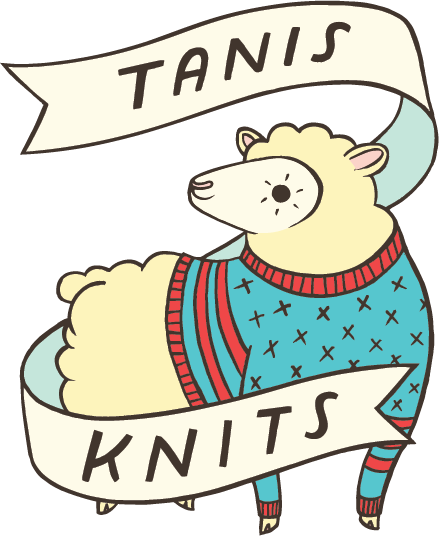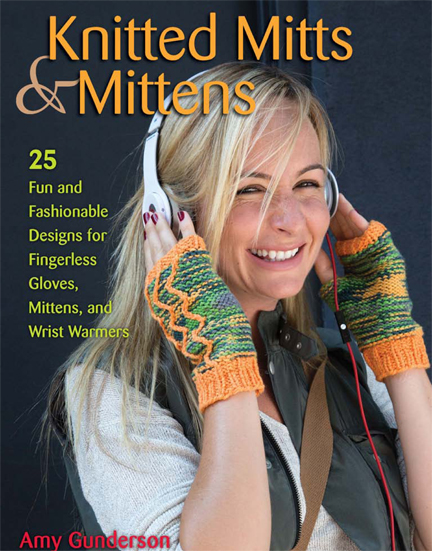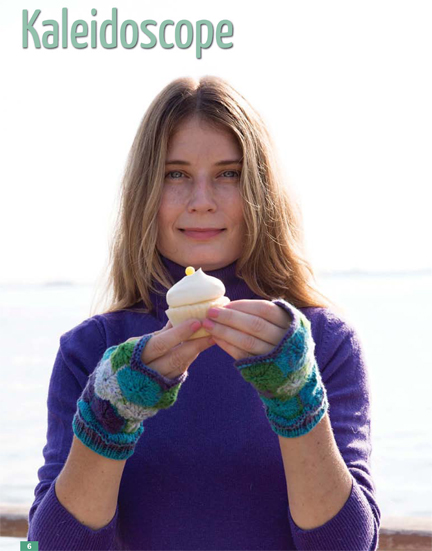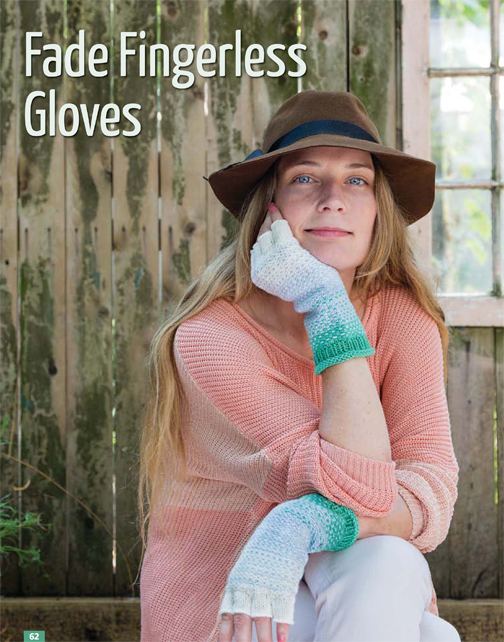Amy was kind enough to sit down with me and answer a few questions...
Tanis (TG): Can you give the readers a little background on you? How long have you been knitting?
Amy Gunderson (AG):I'm one of the newer generation of knitters raised by Ravelry. I've been knitting a little over 5 years and joined Ravelry in my first couple of months. I've always loved to make things with my hands; that is nothing new. I dabbled in hand-sewing in my early teenage years. After acquiring a sewing machine I began quilting and sewing clothes. Enter crochet about 15 years ago, and then weaving at some point after knitting. I think weaving is something every knitter and crocheter should have the capacity to do - it's such a great way to use up odds and ends!
I attended the University of Iowa as a violin major as a 17-year-old but dropped out on a whim and moved to NYC and Boston for a couple of years. After a few years of waffling and being a lazy 20-something, my husband and I opened a pizza place and operated it for 8 years in Iowa City. It was there that I learned to knit. This was a really great way to learn, actually. When I would be learning a new skill and a customer would call, I had to be prepared to drop everything in an instant. It taught me to "read" my knitting very quickly because I could be interrupted at any time and would lose my place.
After I'd been knitting for a year or so, I started writing patterns and selling them on Ravelry. Knitscene published my first couple of designs outside of Ravelry in summer of 2012. Before these designs were even published, I answered an ad for a design coordinator position with Universal Yarn. To the surprise of my poor husband who had said, "um, sure, I'd move to North Carolina", I was hired in early 2012. Now the creative lead for Universal, I feel lucky to be doing yarny things all day long, get paid for it, and have health insurance!
TG: Why focus on mittens? Do you have a particular love for them or reason why you gravitated towards that subject? Tell us about your book and why it's special.
AG: Honestly, this book idea did not originate with me. Pam Hoenig, editor of Stackpole Books, contacted me last year regarding the concept. She had seen a couple of my fingerless glove patterns on Ravelry and wondered if I'd be game to do an entire book of them. Because I'm more sweater driven, I hesitated at first. But after pondering the thought of all these small projects, the more excited I became about doing the book. The book is special to me because it's my first and because I'm sincerely proud of it.
TG: While it's a bit like asking someone whom their favorite child is, do you have a favorite pair?
AG: I'm kind of wishy-washy, really. Ask me the same question tomorrow and I might have a different answer. My tastes are constantly changing. Today, I'd have to say Boutros the Beetle. I once adapted an earflap hat pattern to include both triceratops and beetle motifs. I'm closer to 40 now than I am 30 but I still love quirky things that I did as a kid. The idea behind these was basically, "Beetles on fingerless gloves for adults? Why the heck not?"
TG: What is your favorite knitting technique?
AG: This is harder to choose than a favorite glove pattern. I usually say fair isle or intarsia for design, but I love everything. I do.
TG: You've got some really interesting takes on the "modern mitten." how did you go about deciding what would make the cut?
AG: I have to really "be feeling it" to want to put effort into taking a design beyond sketching and initial swatching. But sometimes I'm surprised. I wanted to do a pair of colorwork mittens and just cast-on without really thinking about it or sketching. About halfway through the first mitten I threw it aside and decided it was too blah. After a few weeks and a few more pairs were done, I noticed the half-finished mitten laying there and decided to give it another try. That's when I decided that what they needed was a little extra pop of color. After adding the little embroidery wraps and doing an impromptu double layer cuff, Swedish Mittens happened. But yeah, knitting is just as much about ripping and tossing work aside as it is about productivity. Sometimes ideas are just garbage and shouldn't be bothered with. And that's okay! It's about realizing that and just moving onto the next thing.

TG: What was your thought process for the book? Did you sit down and write out techniques you wanted covered, or think about what's missing from existing mitten designs? Did you sketch or make a list?
AG: Even though Pam approached me about the book, I still had to put together a proposal for Stackpole. In that proposal I outlined a number of generic ideas I had -colorwork mittens for men, long lace mitts, etc. I'd had a few ideas kicking around in my head that I was sure I wanted to do, so that's where I started. Boutros the Beetle was the second pair because I knew I wanted some quirky colorwork. Little Bow mitts came early because I knew I wanted a felted element somewhere in the book. But beyond the first few pairs, I really just did what I felt like doing. I would refer back to my initial proposal from time to time making sure most of those items were covered. But mostly, I'd just take it day by day, sort of reevaluating the collection as I went.
TG: What is your advice for people about to make the transition from first scarf or hat to the world of mitten knitting? What would be the best pair in your book to start with?
AG: Big and Little Bamboo would be a great beginner pattern. They use pretty straightforward construction, worked from the cuff up, incorporating a thumb gusset and a simple textured pattern.
The biggest put-off for a newer knitter might be the use of double pointed needles. They're not as tricky as they look, they just take a little practice. And it's fun to use them in public around non-knitters; they're always so mystified by what look like 12 small skewers surrounded by yarn.
TG: It must have been so much fun to choose the color palette. Can you tell us about that?
AG: Again, it was really the same way I did the designs, totally on the fly. Universal Yarn's sister company is Premier Yarns, which is the company whose yarn I used exclusively for the book. If there happened to be an odd skein of something sitting around the office I would often just use that color because it was what was handy. That was another way of adding restrictions to the designs, which is something I like in doses; it can be a fun challenge!
TG: Do you have any advice for someone wanting to try their hand at designing their own mittens?
AG: If you have an idea, any idea, simple or crazy, just do it! Mittens don't have to be knit in one direction. They can go top down, side to side, inside out, etc. But above all, do what's fun!
Thanks, Amy! My favorite pair in the book are definitely the Slouchy Mitts (pictured above in gray).
One lucky reader will win a copy of Amy's book of their very own! Be sure you subscribe to the blog and leave a comment with the answer to this trivia question:
One lucky winner will be chosen at random on Monday, April 7th.








